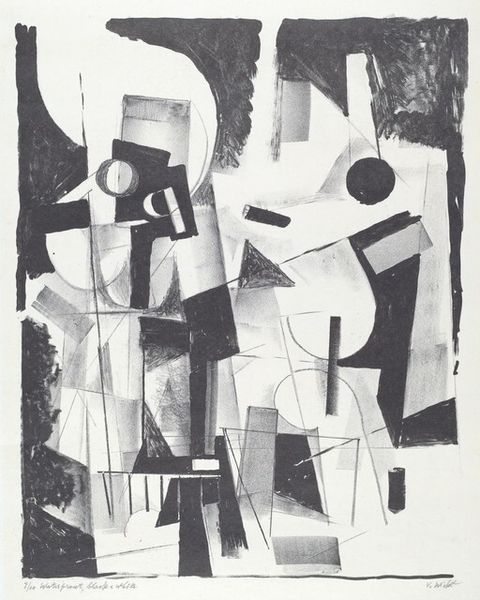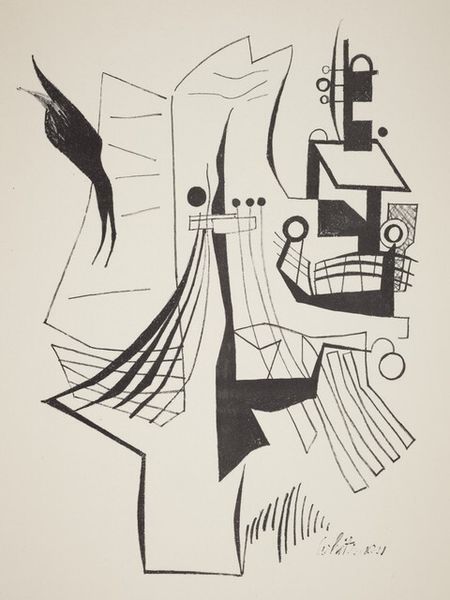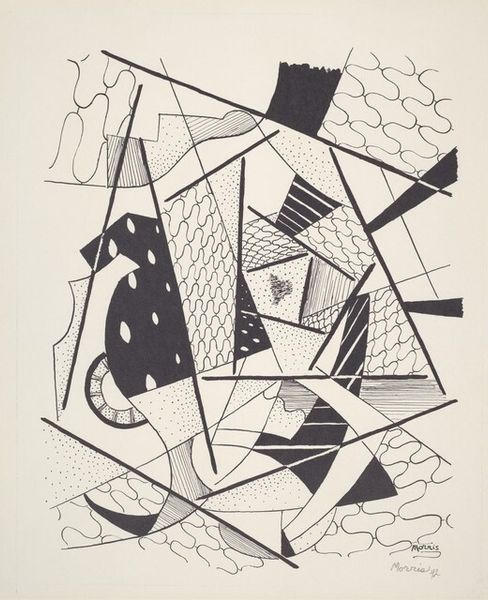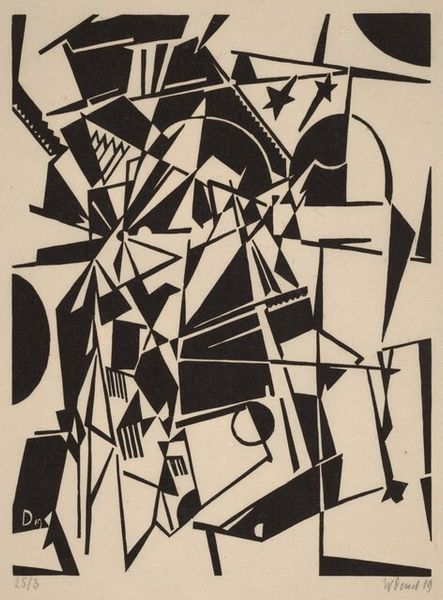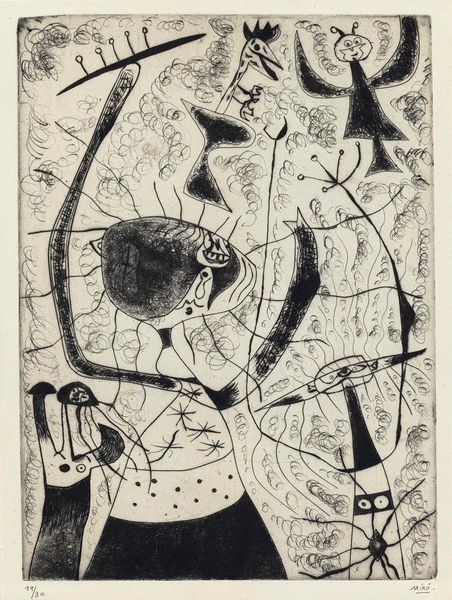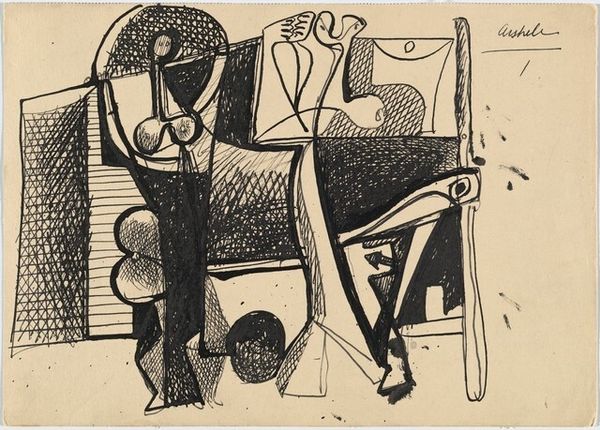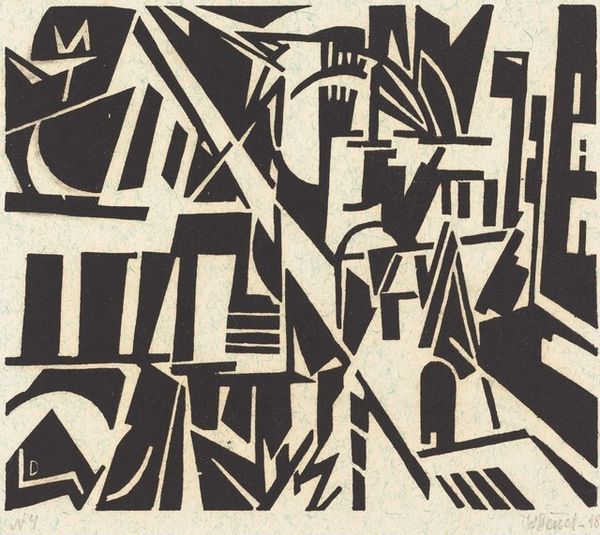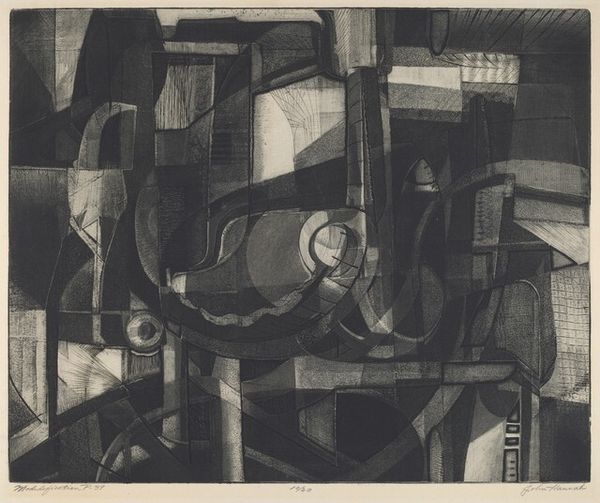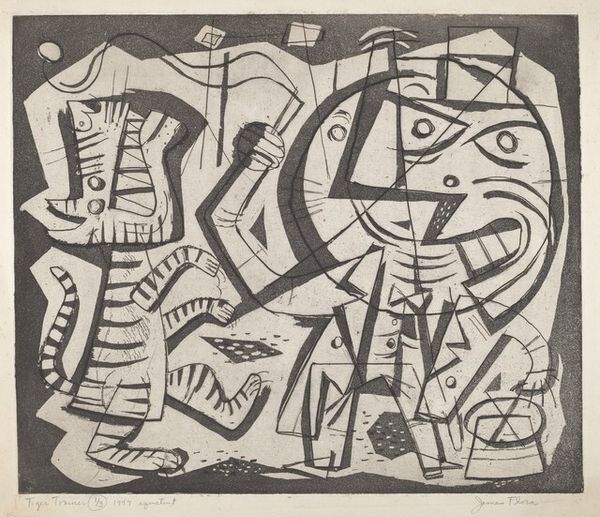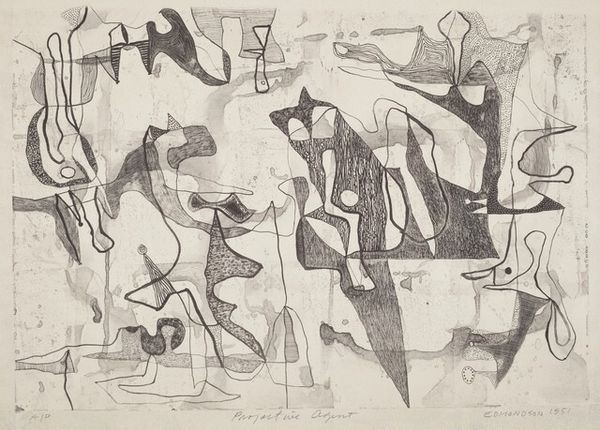
drawing, print, ink
#
drawing
# print
#
abstract
#
form
#
ink
#
geometric-abstraction
#
line
#
modernism
Dimensions: Sheet:303 x 232mm Image:258 x 219mm
Copyright: National Gallery of Art: CC0 1.0
Wilfred Zogbaum made this untitled abstract print in 1937. At first glance, the image seems to be a jumble of shapes. Yet, look closely, and you might notice a window, perhaps part of a building, and other shapes that might allude to a landscape. It’s important to remember the context in which this work was made. The 1930s were a time of economic hardship and political upheaval in the United States. Many artists responded by creating art that was socially engaged, which means reflecting on the socio-political climate of the time. But others, like Zogbaum, turned to abstraction, a style that turned away from recognizable imagery. It was a conscious choice to explore purely formal concerns, such as shape, line, and composition. Understanding an artist like Zogbaum requires us to explore not only the artwork itself but also the social and institutional context in which it was created. For example, what were the prevailing artistic trends and debates of the time? How did institutions like museums and galleries support or reject abstract art? These are the kinds of questions that we as art historians can explore to better understand the meaning and significance of art.
Comments
No comments
Be the first to comment and join the conversation on the ultimate creative platform.
